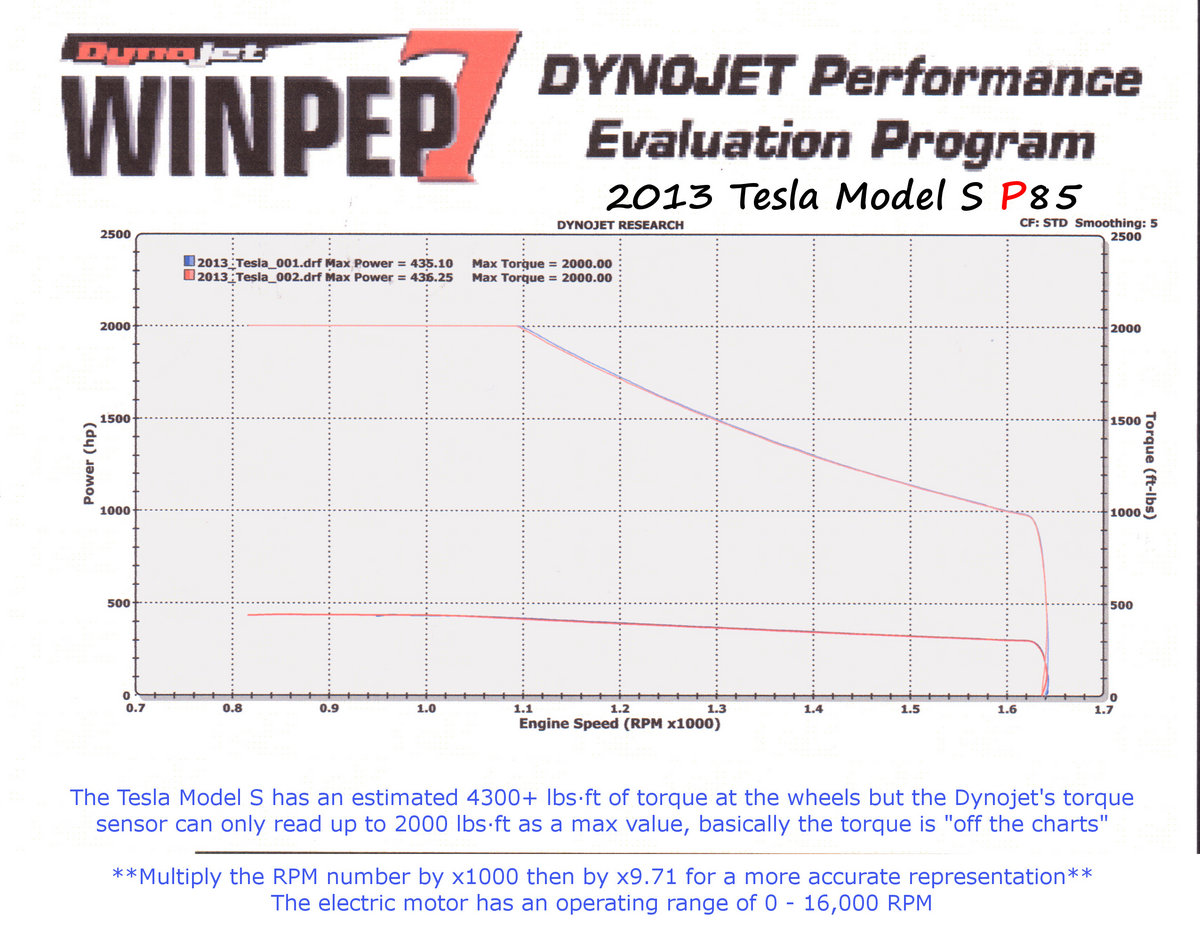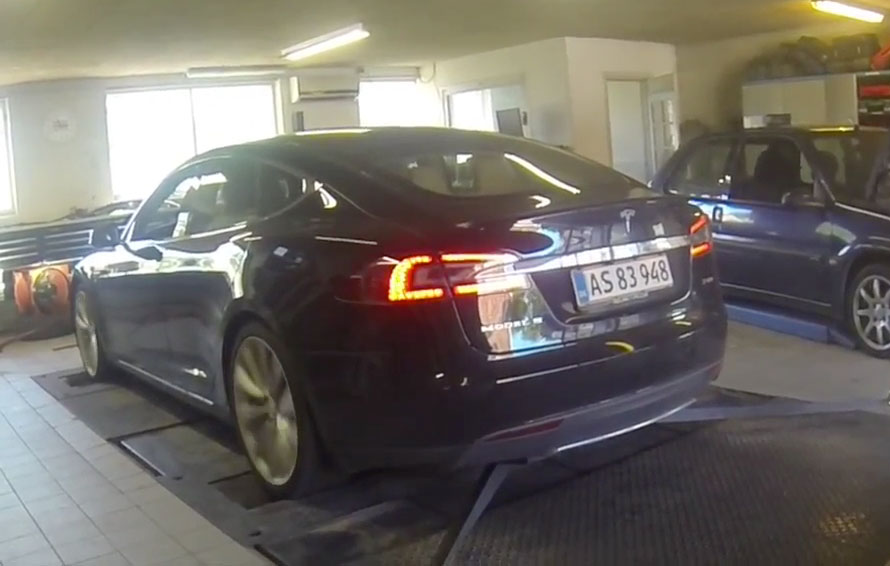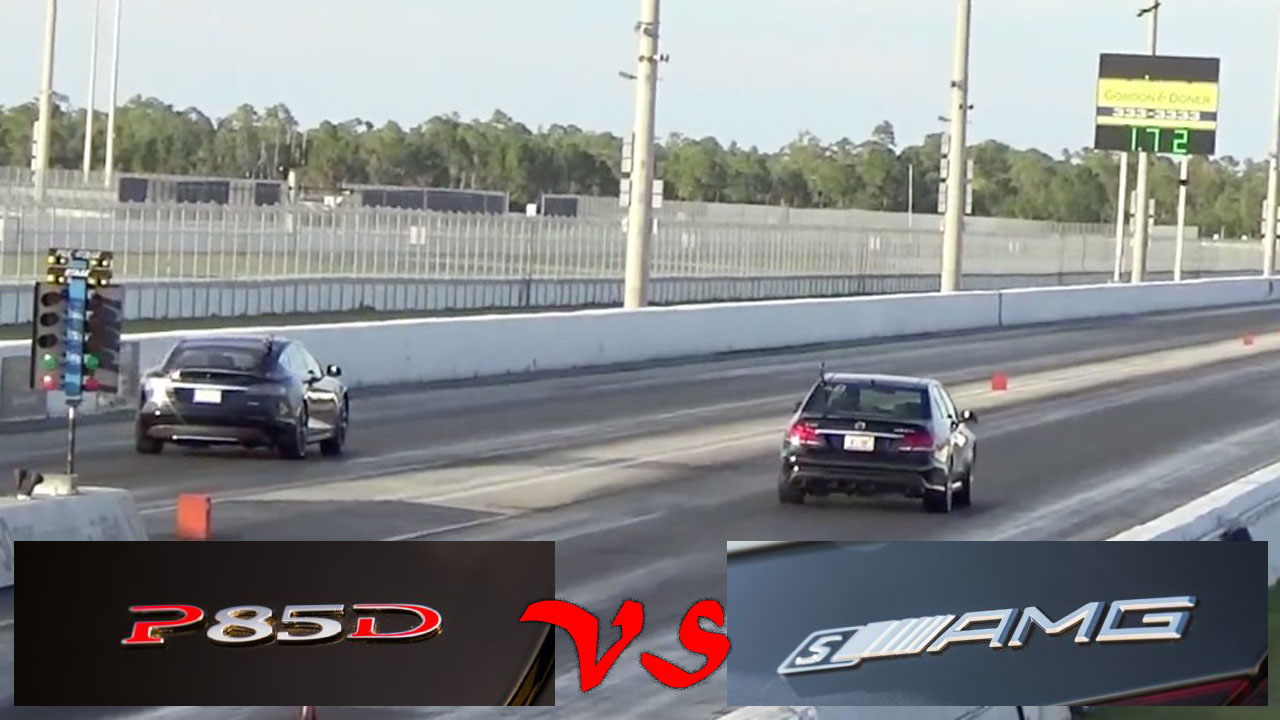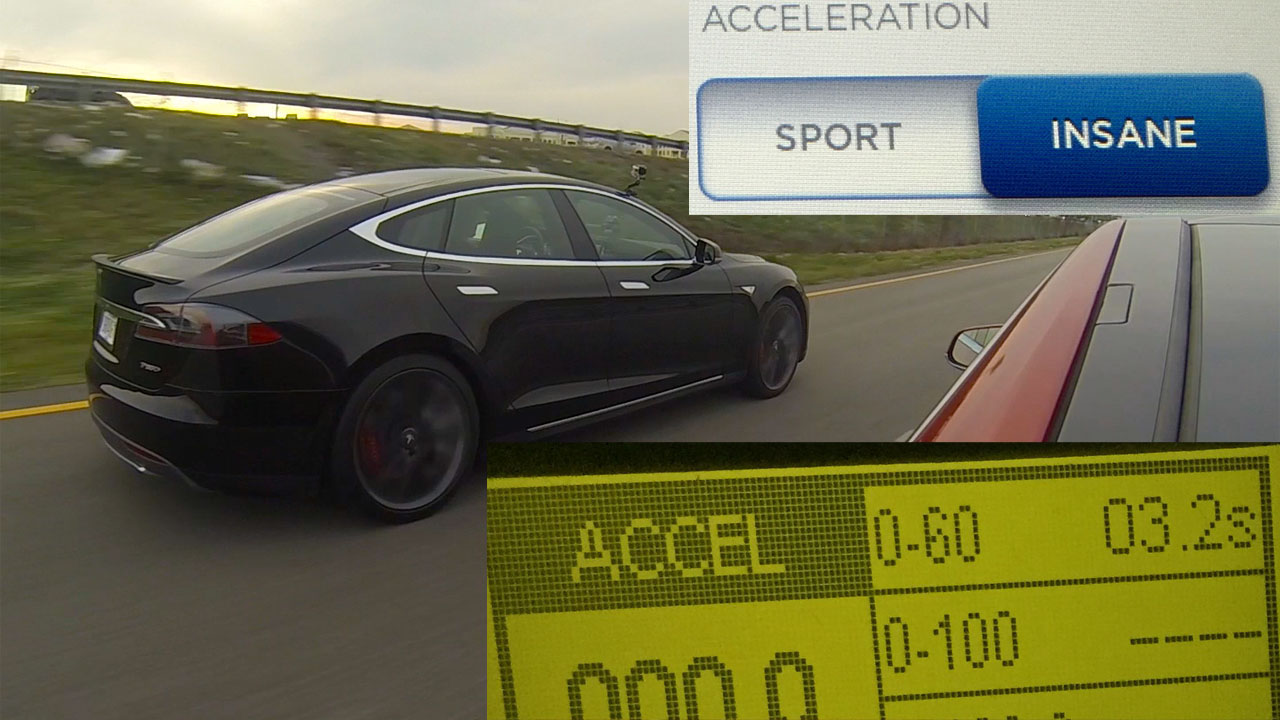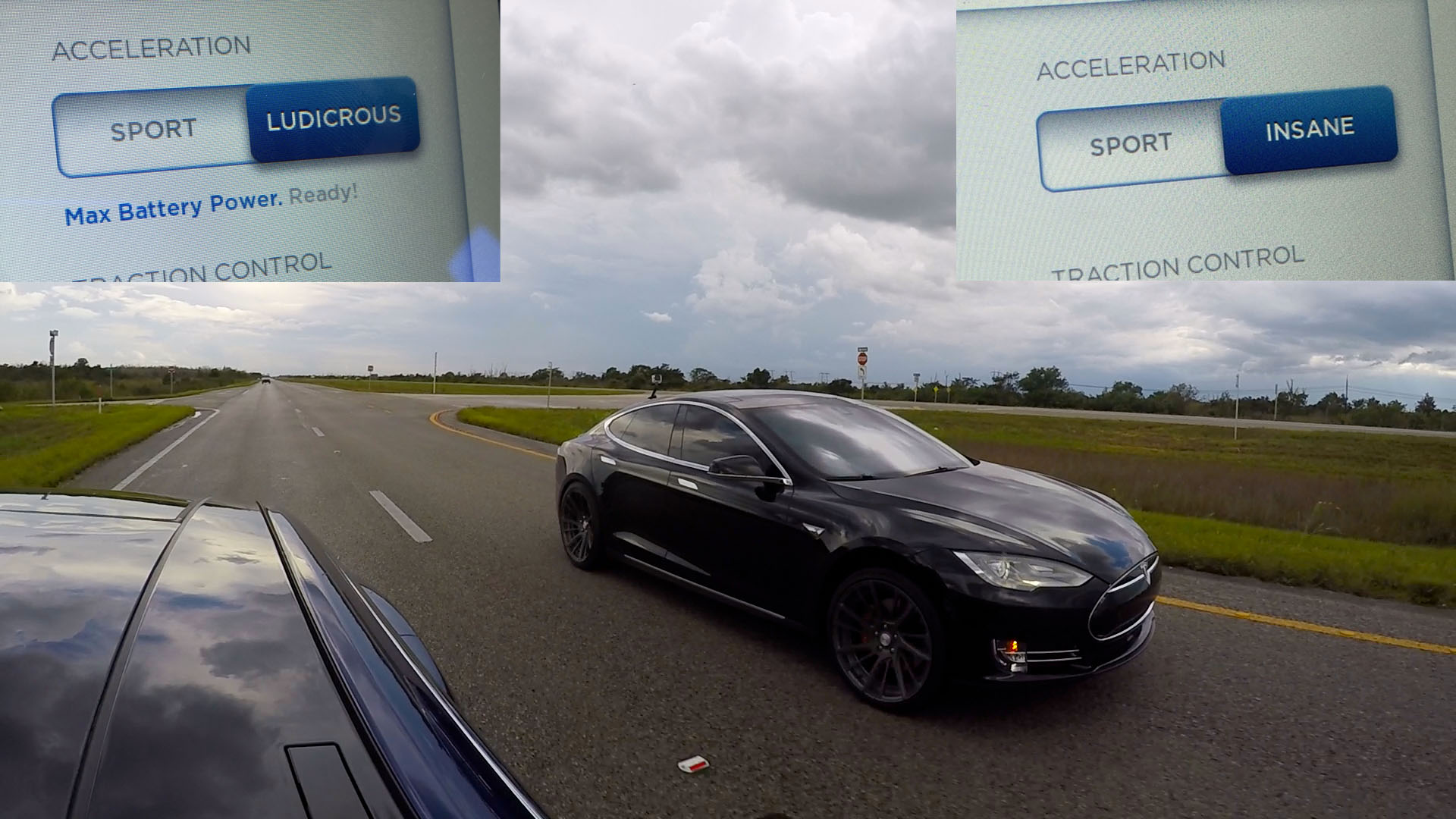Tesla Model S Confuses a DynoJet Dyno
August 8th, 2014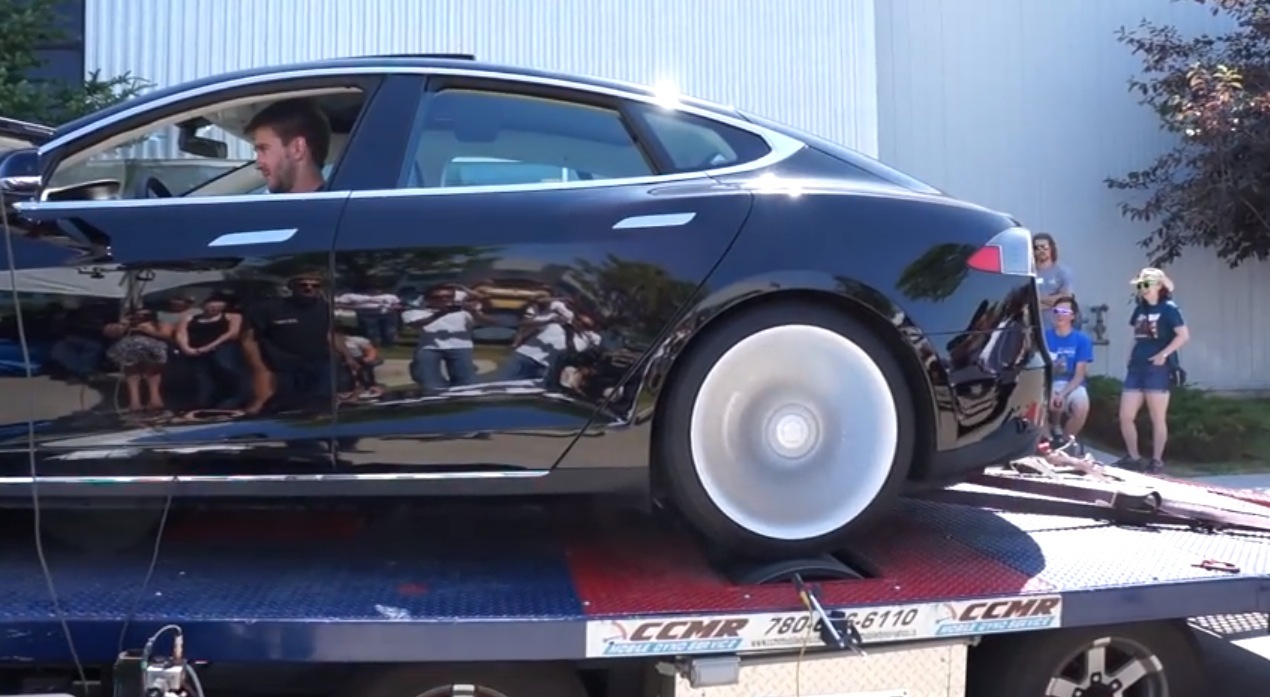 Emmanuel out of Alberta Canada put his 2013 Tesla Model S P85 on a DynoJet dyno for a couple of pulls to see how much power it could put down. It’s not clear what happened, but the Tesla’s instant torque apparently confused the DynoJet dyno, causing it to max out the torque readings at 2,000 ft-lbs of torque.
Emmanuel out of Alberta Canada put his 2013 Tesla Model S P85 on a DynoJet dyno for a couple of pulls to see how much power it could put down. It’s not clear what happened, but the Tesla’s instant torque apparently confused the DynoJet dyno, causing it to max out the torque readings at 2,000 ft-lbs of torque.
Obviously that’s not correct, but the horsepower numbers were inline with his Tesla Model S P85 putting down a relatively flat 436 horsepower to the wheels across a wide range of speeds, likely 10 MPH to 130 MPH. Tesla rates the Model S P85 at 415 horsepower.
Since there is no transmission in the Tesla, just an open differential and two half shafts between the electric motor and the wheels, the driveline losses must be very low or negligible. This partially explains why the Tesla Model S is so quick giving it’s power and weight. The 436 horsepower number produced by this Tesla would be the equivalent of a 500+ horsepower traditional car with a transmission and normal driveline losses of around 14%.
Also check out our Tesla vs Viper and Tesla vs Corvette heads up races.
UPDATE: One reader’s explanation for the erroneous torque readings:
I would not be willing to trust the torque number as the way these dynos produce a torque number is a mathematical algorithm based on the HP output and the engine RPM. These guys are using a tool known as an optical RPM sensor to grab RPMs off of the rear wheel. It is visible on the magnetic stand covering the center of their phone number on the trailer. This device is meant to be used on an engine crank pulley by placing a piece of reflective tape on a non-reflective crank pulley and counting the rotation. 1 rotation = 360 degrees.
The issue here is that the wheel is a 10 spoke wheel, and is reflective enough to make the optical eye think that each spoke is a rotation. The lowest degree of fire you can set in the dyno software is 90, or effectively, each time the eye triggers = 1/4 of a full rotation. Assuming that the wheel rotates at the exact same speed as the electric motor, this would mean that the RPS would still be off by 2.5 times (10 spokes /4 – 2.5).
Since torque is a calculation of RPM and Horsepower (the HP readings are taken by the acceleration rate of a known mass, the drum, and therefore can not be thrown off by erroneous RPMs), the Torque number is effectively increased by 2.5x while the HP number reads as normal. The dyno software is limited to 2000 hp / 2000 tq (software limitation only) and therefore an actual torque number can not be calculated.

